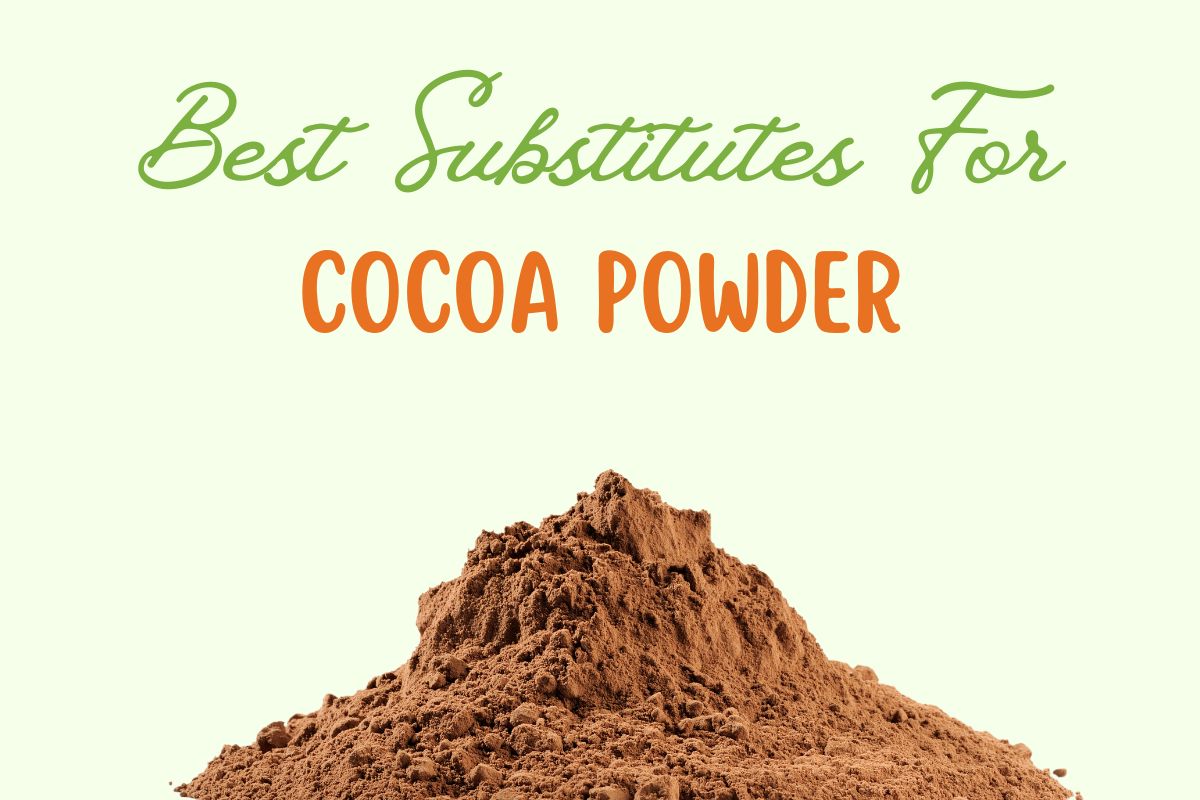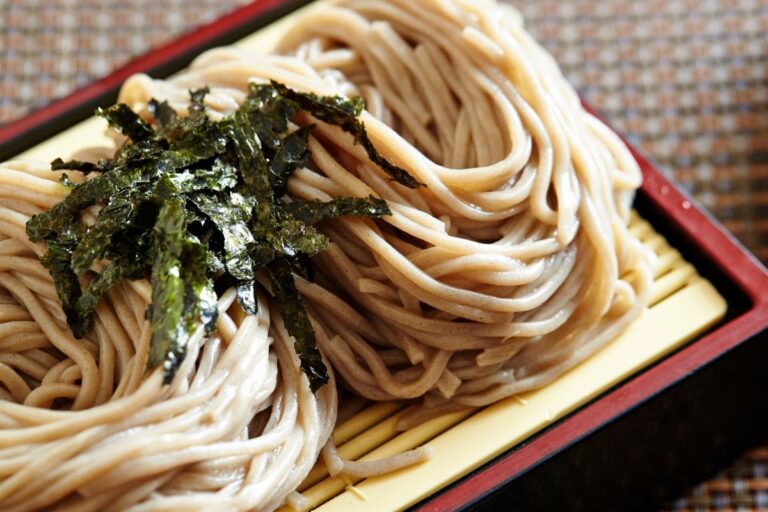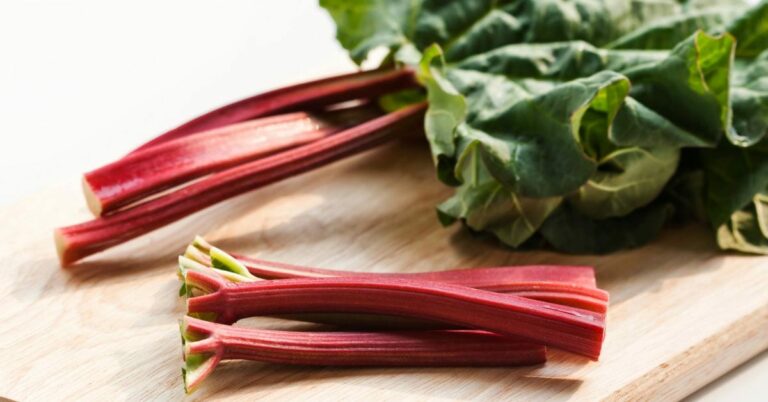8 Best Substitutes For Cocoa Powder
Are you a chocolate lover craving to experiment with your favorite recipes? Or perhaps, you’ve run out of cocoa powder in the middle of baking and need an alternative. Worry not! We are here to help you discover the best substitutes for cocoa powder.
In this blog post, we will explore various alternatives, their benefits and drawbacks, how to choose the perfect substitute based on your preferences, as well as some tips on using them effectively in your recipes.
Understanding Cocoa Powder And The Need For Substitutes
Cocoa powder is a popular ingredient in many recipes, ranging from chocolate desserts to savory dishes. Made by crushing and grinding the beans of the cacao tree, it delivers an unmistakable bitter chocolate flavor that enhances both sweet and savory dishes.
The need for substitutes arises from various factors such as allergies to cocoa products, preference for different taste profiles, health concerns or benefits tied to specific ingredients, or simply because your local grocery store ran out of stock.
For example, using unsweetened baking chocolate instead of cocoa powder could require adjustments in other ingredients due to its high content of cocoa solids and chocolate liquor.
On the other hand, Dutch-processed cocoa has a less bitter flavor and dissolves easily compared to traditional cocoa powder – making it a suitable alternative when smoothness is desired in your recipe.
Quick Overview
| Substitute | Description | Pros | Cons |
|---|---|---|---|
| Cacao Powder | Derived from cold-pressed cacao beans. Intense chocolate taste. Used in a 1:1 ratio. | Rich in antioxidants and essential minerals. Strong chocolate flavor. | Slightly bitter. May not dissolve as easily as cocoa powder. |
| Carob Powder | Comes from the carob tree. Mild, slightly nutty flavor. Used in a 1:1 ratio. | Low in fat and calories, high in fiber, contains antioxidants. Naturally caffeine-free. | Not as strong a flavor as cocoa powder. |
| Unsweetened Baking Chocolate | High content of cocoa solids and chocolate liquor. | Provides a rich chocolate flavor without needing additional sugar or fat. | No sugar added, so may need to adjust sweeteners in recipe. More intense flavor can overpower other flavors. |
| Dutch-Processed Cocoa Powder | Treated with an alkalizing agent to reduce acidity. | Less bitter flavor, darker color, dissolves easily, blends smoothly. | Lower acidity may affect how certain baked goods rise. |
| Espresso Powder | Finely ground coffee made from roasted and brewed beans. | Rich, intense flavor. Contains caffeine. | Can overpower other flavors. May not work well in recipes requiring cocoa powder’s texture. |
| Beetroot Powder | Non-chocolate substitute. Adds natural sweetness. | Contains antioxidants, vitamins, and minerals. | May affect color of baked goods. |
| Matcha Powder | Ground-up green tea leaves. | Unique flavor that adds depth to baked goods. | Can overpower other flavors and make the dish taste bitter. |
| Turmeric Powder | Adds color and earthy flavor. | Has anti-inflammatory properties and may boost brain function. | May change color of recipe from brown to yellowish-orange. |
Best Cocoa Powder Substitutes
The best substitutes for cocoa powder include cacao powder, carob powder, unsweetened baking chocolate, Dutch-processed cocoa powder, and espresso powder.
1. Cacao Powder
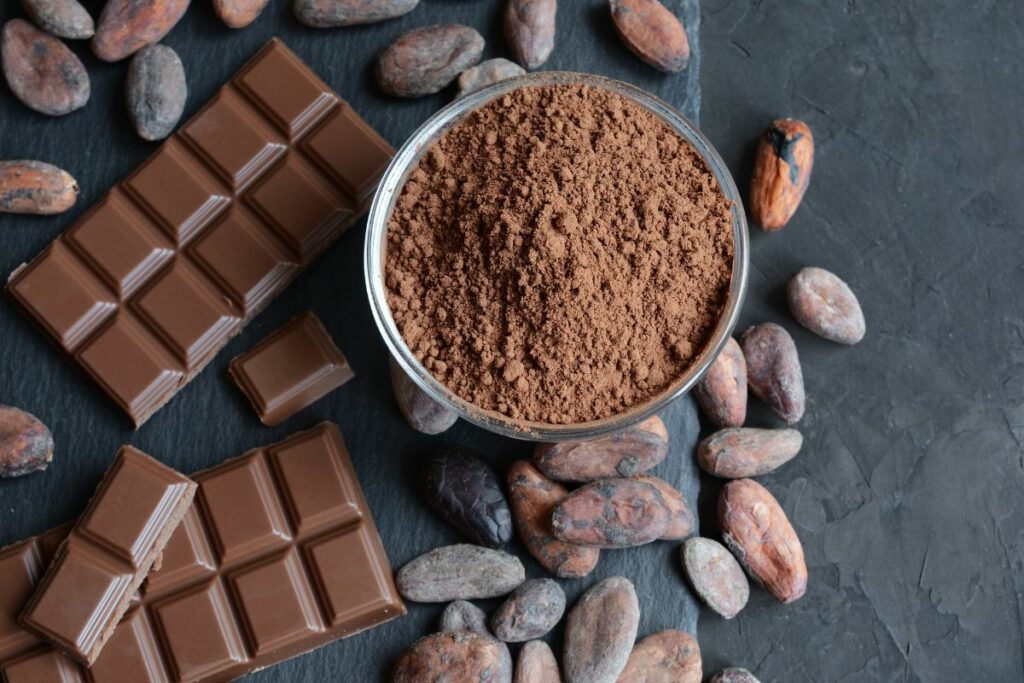
Cacao powder, a popular and nutritious substitute for cocoa powder, is derived from cold-pressed cacao beans. This process preserves most of the rich antioxidants and essential minerals found in raw cacao while removing the fat content (cacao butter).
In comparison to regular cocoa powder, cacao powder offers an intense chocolate taste with a slightly more bitter undertone. However, this can be balanced out by adjusting sweetness levels according to personal preference.
For instance, if you’re making brownies or cookies that call for unsweetened cocoa powder, try substituting it 1:1 with nutrient-rich cacao powder and adding some natural sweeteners like maple syrup or honey for desired taste enhancement.
2. Carob Powder
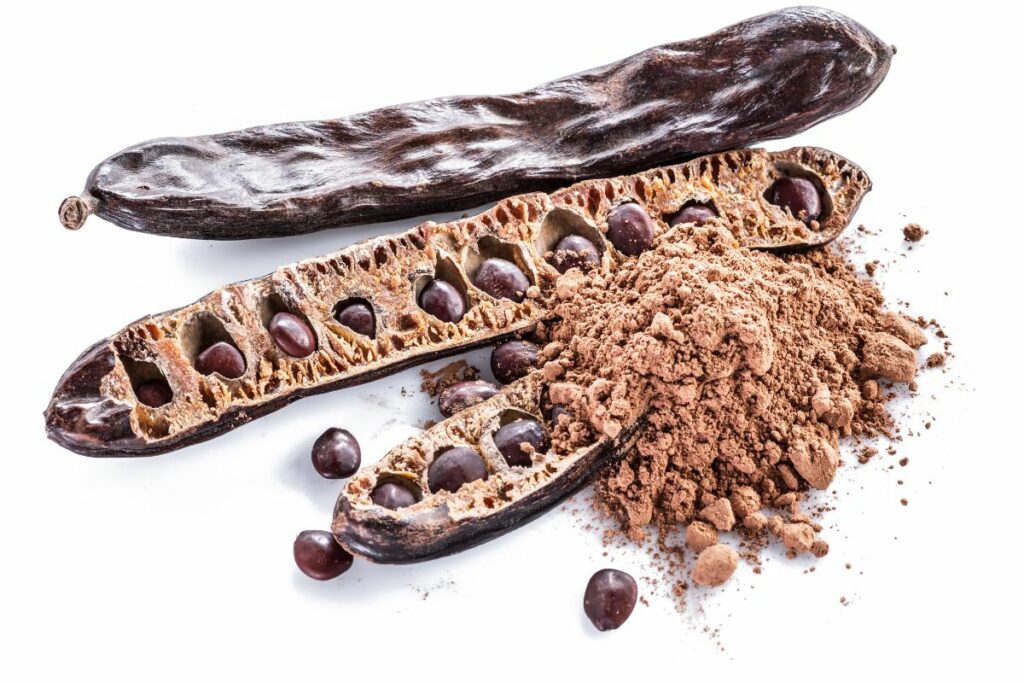
Carob powder is a great substitute for cocoa powder in many recipes. It comes from the carob tree, which is native to the Mediterranean region and produces sweet pods that can be ground into a fine powder.
Carob powder has a mild, slightly nutty flavor that is similar to chocolate but not as strong.
The benefits of using carob powder are that it’s low in fat and calories, high in fiber, and contains antioxidants. It’s also naturally caffeine-free, making it a good option for those who are sensitive to caffeine or want to avoid it altogether.
When substituting with carob powder, use an equal amount as you would cocoa powder and adjust the other ingredients as needed based on your recipe.
3. Unsweetened Baking Chocolate
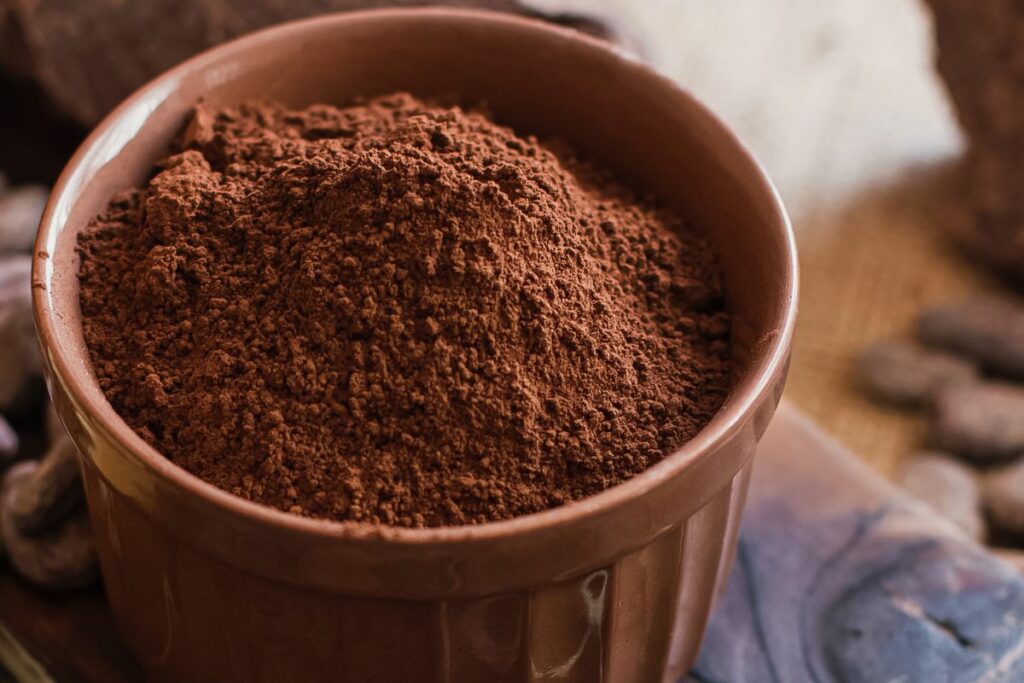
If you’re looking for a substitute that closely replicates the taste and texture of cocoa powder, unsweetened baking chocolate is an excellent choice. With its high content of cocoa solids and chocolate liquor, it’s easy to see how these two ingredients can be used interchangeably in recipes.
To ensure that your recipe turns out well, keep in mind that baking chocolate has no sugar added to it, unlike most commercial cocoa powders which are sweetened. This means you may need to adjust the amount of sugar or other sweeteners in your recipe accordingly.
Additionally, since baking chocolate has a more intense flavor than regular cocoa powder, using too much can overpower other flavors in your recipe.
4. Dutch-Processed Cocoa Powder
Dutch-processed cocoa powder is a great substitute for regular cocoa powder in baking recipes. Unlike natural cocoa powder, Dutch-processed cocoa has been treated with an alkalizing agent to reduce its acidity levels, resulting in a less bitter flavor and a darker color.
This makes it easier to work with as it dissolves easily and blends smoothly with other ingredients.
One thing to keep in mind when using Dutch-processed cocoa is that it may affect how certain baked goods rise because of its lower acidity level. Be sure to adjust your recipe accordingly by adding baking soda instead of baking powder if needed.
Some examples of recipes where you might want to use Dutch-processed cocoa include brownies, cakes, and hot chocolate mixes.
5. Espresso Powder
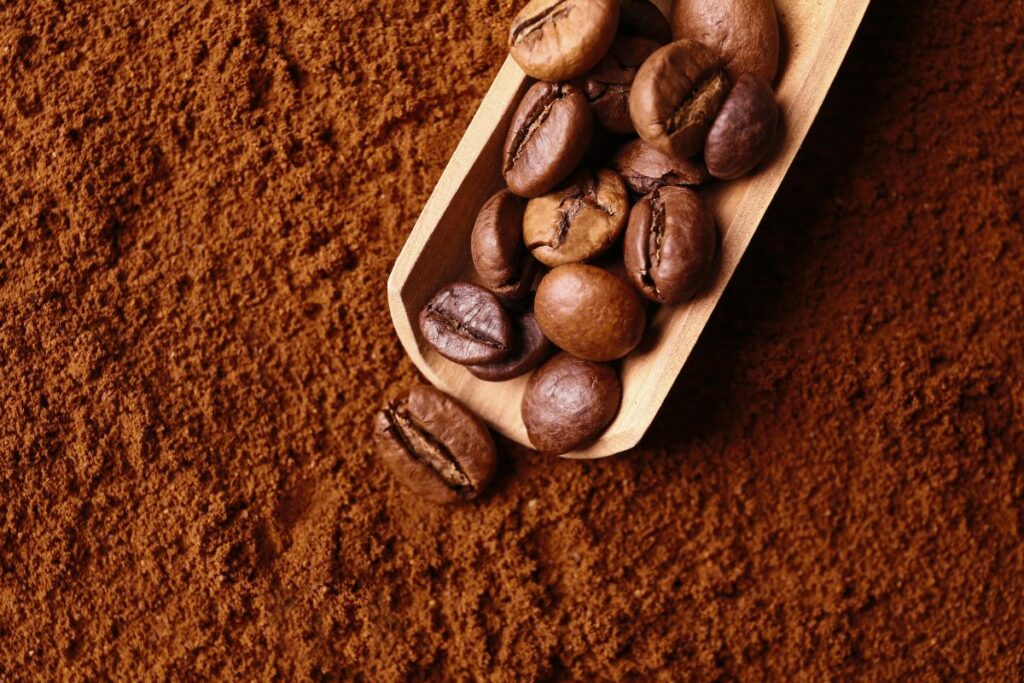
Espresso powder is a great substitute for cocoa powder in baking recipes that require a deep chocolate flavor. This finely ground coffee is made from roasted and brewed beans, giving it a rich and intense flavor.
It also has the added benefit of containing caffeine, which can give your baked goods an extra energy boost.
When using espresso powder as a substitute for cocoa powder, it’s important to adjust the amount used based on the recipe you’re making. Start by adding small amounts and tasting as you go, since too much espresso powder can overpower other flavors in your recipe.
Additionally, keep in mind that while it does provide a similar taste profile to cocoa powder, it may not work well in recipes where the texture of cocoa powder is essential (such as hot chocolate).
Non-Chocolate Substitutes For Cocoa Powder
Non-chocolate substitutes for cocoa powder include beetroot powder, matcha powder, and turmeric powder.
6. Beetroot Powder
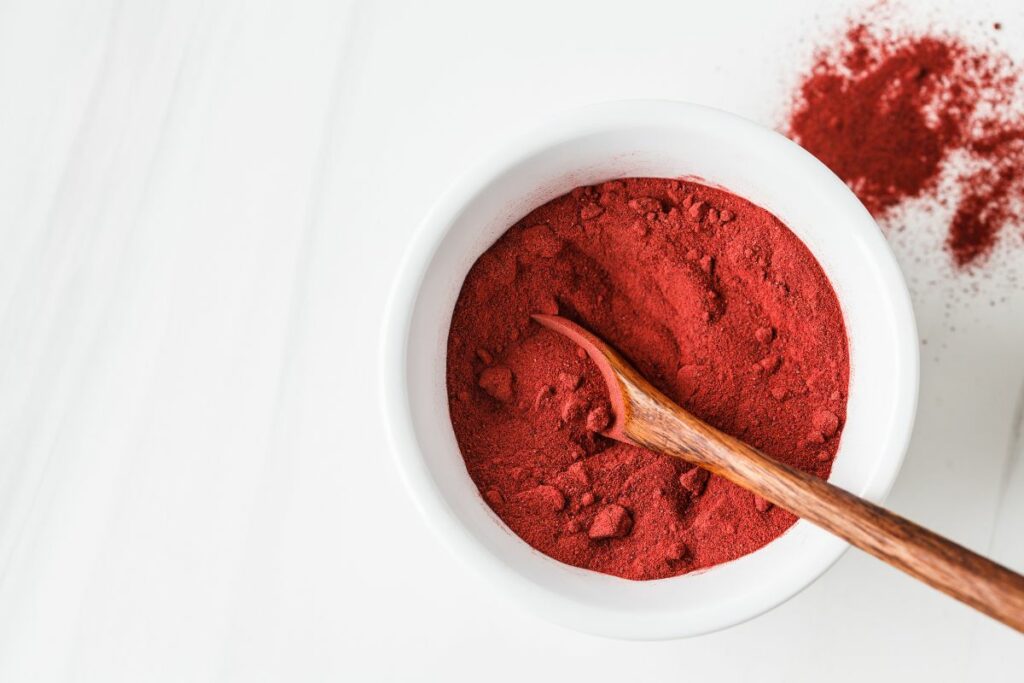
Another great non-chocolate substitute for cocoa powder is beetroot powder. This vibrant and colorful ingredient can add a natural sweetness to your baked goods without the bitterness of cocoa powder.
Beetroot also contains antioxidants, vitamins, and minerals that are beneficial for our health and wellness. It’s recommended to use 1 tablespoon of beetroot powder per cup of flour in recipes calling for cocoa powder to achieve a similar color and texture.
Some popular recipes using beetroot as a substitute include red velvet cakes, cupcakes, and brownies.
7. Matcha Powder
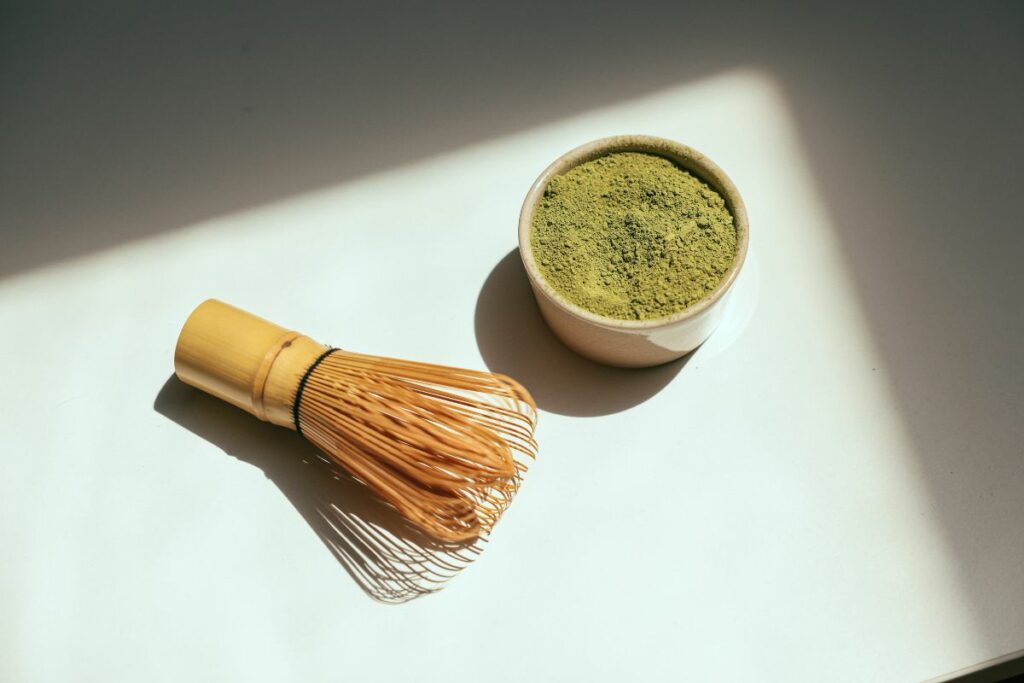
Matcha powder is a popular ingredient in Japanese cuisine and has recently gained attention as a cocoa powder substitute. This bright green powder is made from ground-up green tea leaves, giving it a unique flavor that adds depth and complexity to baked goods like muffins or cakes.
One thing to keep in mind when using matcha as a cocoa powder substitute is the intensity of its flavor. While it can add richness to recipes that call for chocolate, too much matcha can overpower other flavors and make the dish taste bitter.
8. Turmeric Powder

Turmeric powder is a non-chocolate substitute for cocoa powder that can add both color and flavor to your recipes. Turmeric has an earthy taste with hints of ginger and pepper, making it a great addition to warm drinks like spiced hot chocolate or golden milk latte.
This spice is also popular in Indian cuisine and can be used in savory dishes such as curries, soups, and stews. When using turmeric powder as a substitute for cocoa powder, keep in mind that the color will change from brown to yellowish-orange.
It’s recommended to use only small amounts of turmeric powder at first until you achieve the desired hue and flavor in your recipe.
Pros And Cons Of Each Substitute
There are many substitutes for cocoa powder, each with its own unique pros and cons. Cacao powder is one popular substitute that has a strong chocolate flavor and contains more antioxidants than cocoa powder.
However, it can be expensive and may not dissolve as easily as cocoa powder in recipes. Carob powder is another option that has a sweet and nutty flavor, making it great for desserts like brownies and cakes.
Unsweetened baking chocolate is an excellent substitute for cocoa powder because it has a high content of cocoa solids and chocolate liquor. This means it provides a rich chocolate flavor without needing additional sugar or fat.
Espresso Powder adds richness to baked goods like mocha cupcakes however adding coffee flavors does alter the recipe.
Beetroot Powder alongside matcha or turmeric powders work well as non-chocolate substitutes as they carry healthy nutrients while simultaneously tainting your food with their bright colors.
How To Choose The Right Substitute
Consider the flavor profile and intensity, nutrition and health benefits, availability, and cost when choosing a cocoa powder substitute that will work best for your recipe.
Flavor Profile And Intensity
When choosing a substitute for cocoa powder, it’s important to consider the flavor profile and intensity of different options. For example, cacao powder has a slightly more intense and bitter flavor compared to Dutch-processed cocoa powder.
It’s also important to keep in mind that some substitutes may alter the overall flavor of your recipe. For instance, using matcha powder as a substitute for cocoa powder will give your dish a distinct green tea flavor.
Nutrition And Health Benefits
Choosing a cocoa powder substitute doesn’t just come down to flavor and availability – it’s also important to consider the nutritional benefits of each option. For example, cacao powder is rich in antioxidants and iron, while carob powder is high in fiber and calcium.
Unsweetened baking chocolate is low in sugar and can provide a boost of magnesium, which helps support heart health.
Additionally, many non-chocolate substitutes offer unique health benefits as well. Beetroot powder is loaded with vitamin C and may help lower blood pressure, while turmeric has anti-inflammatory properties and may boost brain function.
Availability And Cost
When looking for substitutes for cocoa powder, it’s important to consider their availability and cost. While some alternatives may be readily available at your local grocery store, others may require a trip to a specialty health food store or online retailer.
Cost is also an important factor when considering substitutes for cocoa powder. Some options, like unsweetened baking chocolate or dutch-process cocoa powder, are relatively affordable and widely available.
Ultimately, the availability and cost of substitute ingredients will depend on where you live and what retailers you have access to.
Using Substitutes In Recipes
Experimenting with different substitutes in recipes can be a fun and rewarding experience, as it allows you to explore new flavors and textures.
Adjusting Quantities And Proportions
When substituting cocoa powder, it’s important to consider the recipe and adjust other ingredients as necessary. For example, if using cacao powder instead of cocoa powder, you may need to add more sweetener or fat to balance out the bitter flavor.
Similarly, if using unsweetened baking chocolate, you’ll want to reduce the amount of additional sugar called for in the recipe. It’s also important to note that some substitutes have a different texture than cocoa powder, which can affect the final product.
When experimenting with different substitutes, start by making small adjustments and testing the results before making larger changes.
Experimenting With Different Substitutes
One of the fun parts of using substitutes for cocoa powder is experimenting with different options to find the perfect one for your recipe. For example, try replacing cocoa powder with carob powder if you want a sweeter flavor without any bitterness.
Or, use cacao powder instead of cocoa powder for a more rich and intense chocolate taste. Another option is trying non-chocolate substitutes like beetroot or turmeric powders to add unique flavors and health benefits to your baked goods.
It’s important to keep in mind that each substitute has its own pros and cons, so experiment carefully by adjusting quantities and proportions as needed.
Also, consider the recipe’s overall flavors when substituting ingredients – some may complement better than others depending on what you’re making.
Considering The Recipe And Its Flavors
To choose the right substitute for cocoa powder in a recipe, it’s important to consider the other ingredients and flavors involved. For example, if you’re making a chocolate cake, using unsweetened baking chocolate as a substitute may work well since its high content of cocoa solids and chocolate liquor can enhance the chocolate flavor.
Another thing to consider is whether the recipe calls for Dutch-processed or natural/cocoa powder. Dutch-processed cocoa has been treated with an alkalizing agent that neutralizes acidity, resulting in deeper color and milder flavor.
Ultimately, experimentation is key when substituting ingredients in recipes.
Storage, Shelf Life, And Frequently Asked Questions About Cocoa Powder Substitutes
Storing cocoa powder substitutes can be just as important as choosing the right one. Most substitutes have a similar shelf life to cocoa powder, which is typically six months to a year if kept in a cool, dry place.
Frequently asked questions about cocoa powder substitutes often revolve around their health benefits. While many alternatives are touted for being healthier than cocoa powder, it’s important to remember that they still contain calories and sugar.
Another question people ask is whether they can substitute any other type of flour for cocoa powder in baking recipes.
Overall, when using substitutes for cocoa powder it’s important to follow proper storage guidelines and keep an open mind when experimenting with new flavors and textures.
Conclusion
In conclusion, while cocoa powder is a staple ingredient in many recipes, there are plenty of substitutes available for those who cannot use it or simply want to try something different.
From cacao powder to beetroot powder, carob powder to espresso powder, the options are endless. It’s important to choose the right substitute based on your specific needs and the recipe you’re using it in.
Don’t be afraid to experiment with different substitutions and adjust ratios as needed. With these best substitutes for cocoa powder at your fingertips, you can enjoy delicious chocolatey treats without compromise.
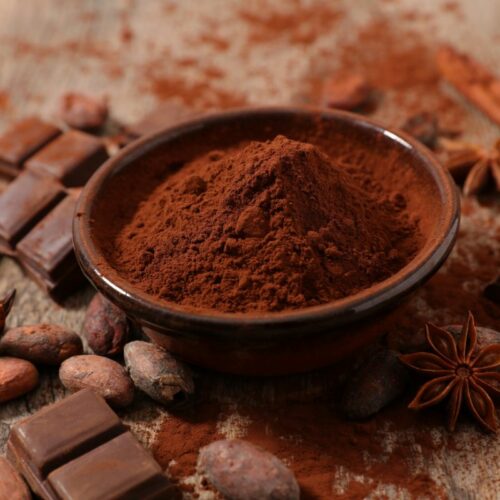
Best Substitutes For Cocoa Powder
Ingredients
- Cacao Powder
- Carob Powder
- Unsweetened Baking Chocolate
- Dutch-Processed Cocoa Powder
- Espresso Powder
- Beetroot Powder
- Matcha Powder
- Turmeric Powder
Instructions
- From the list of substitutes above, pick your favorite to use in its place.
- Use your imagination and be creative with these substitute recipes!

